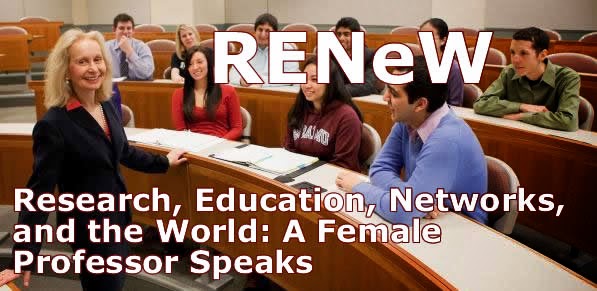Last evening, I took part in the Traffic panel at the World Science Festival at the Kimmel Center at New York University. Robert Krulwich, who has been called the "most inventive reporter," was our panel moderator. I joined him and Iain Couzin and Mitchell Joachim, "Dr. J.," on stage. We had been working earlier on "rehearsing" the segment towards a view of integrating the videos and graphics that we had prepared. Our panel theme was what insects and interstates have in common and how biology, human behavior, and urban design can helps us to "solve" one of the most annoying problems -- that of traffic congestion. Krulwich was fantastic as a moderator and managed to interweave our unique expertises and research into a very entertaining and informative segment. Not only did the panelists have a wonderful time but, based on the questions from the audience and the number that stayed afterwards to continue the discussions, it was clear to me that this panel and the questions that it raised, resonated with the audience. I especially appreciated that the audience ranged from an infant to students from high school and colleges through mathematics professors to interested public to very senior transportation and civil engineering professionals. Even my uncle, who is 89 years old, and an award-winning bridge designer, who still works in Manhattan, came to the event, as did one of my collaborators, Professor Lan Zhao of SUNY Old Westbury, who brought her son and friends.
We explored traffic flows from starlings and sardines to ants and locusts plus pedestrian congestion and drivers around the world. We posited "solutions" from enhanced network designs and infrastructure investments, to improved signal settings, to soft-bodied, collapsible cars, some in the shape of sneakers, to sci-fi approaches such as jet packs. I believe that we showed the excitement of the science in the world around us as well as the beauty and elegance of scientific and mathematical approaches to traffic analysis and management.
New York City is pulsating with science since the World Science Festival has "taken over the city." The gala that took place at Alice Tully Hall on Wednesday evening was reviewed enthusiastically in yesterday's New York Times. What an incredible event it was and what a terrific beginning to this festival.
I thank the founders and directors of the World Science Festival, Dr. Brian Greene of Columbia University, and his wife, the journalist Tracy Day, for having the vision, energy, and creativity to establish this magnificent celebration of science!
I also thank the wonderful producers of this festival, with whom I have worked, notably, Alison Snyder and Susan Ades Stone.
To experience and be part of this festival with its terrific community of researchers, scientists, artists, dancers, musicians, explorers, and writers, has been incredibly interesting and rewarding. The stay at the Soho Grande, the hotel for the festival, has also been fantastic. I even got a chance to meet other guests at the hotel who are taking part at the festival, including "Snowball," the dancing cockatoo, who is a youtube sensation and who will be taking part in the segment today on avian geniuses. I had an opportunity to talk with Snowball's absolutely delightful and very kind owners and to also "chat" with Snowball. His cage is decorated with all sorts of wonderful toys and his owners told me that he has very much enjoyed staying in NYC!
About Me
- Dr. Anna Nagurney
- Dr. Anna Nagurney is the Eugene M. Isenberg Chair in Integrative Studies at the Isenberg School of Management at the University of Massachusetts Amherst. She was appointed to this chaired professorship on April 14, 2021. Prior to this chaired professorship, since 1998, she was the John F. Smith Memorial Professor of Operations Management. She was a Visiting Fellow at All Souls College at Oxford University for the 2016 Trinity term. She was a Visiting Professor at the School of Business, Economics and Law at the University of Gothenburg in Sweden for 2012, 2013, 2014, and 2015. Her latest book is: Labor and Supply Chain Networks, published by Springer in 2023. Her other recent book, co-edited with I. Kotsireas, P.M. Pardalos, and A. Tsokas, is: Dynamics of Disasters: Impact, Risk, Resilience, and Solutions, and was published by Springer in 2021. She is also the co-author of the book: Competing on Supply Chain Quality: A Network Economics Perspective, with D. Li, and published in 2016. She is the Founding Director of the Virtual Center for Supernetworks, which she established in 2001.
Subscribe To RENeW


Recent Visitors
Blog Archive
-
▼
2009
(172)
-
▼
June
(15)
- The Science of Skating and Thanks to the Coaches
- The Importance of Knowing Languages, Prize Competi...
- Social Networking and Producing a Newsletter
- The Fragile Networks book is published
- WSF to WF -- NYC to Hadley's 350th anniversary parade
- Discover magazine, Infrastructure, The New York Ti...
- Braess on Broadway and the World Science Festival
- Traffic and the World Science Festival plus the Da...
- The Brian Lehrer Show and the New Isenberg School ...
- Opening Night Gala Performance at Lincoln Center, ...
- World Science Festival, New York City, Traffic
- The Bement School, Graduation, Reflections, and Ge...
- Plane Crash on the Same Day I was Flying (Deja Vu)
- Photos of Rome, Italy
- Planes, Trains, Automobiles, and Bicycles
-
▼
June
(15)
















